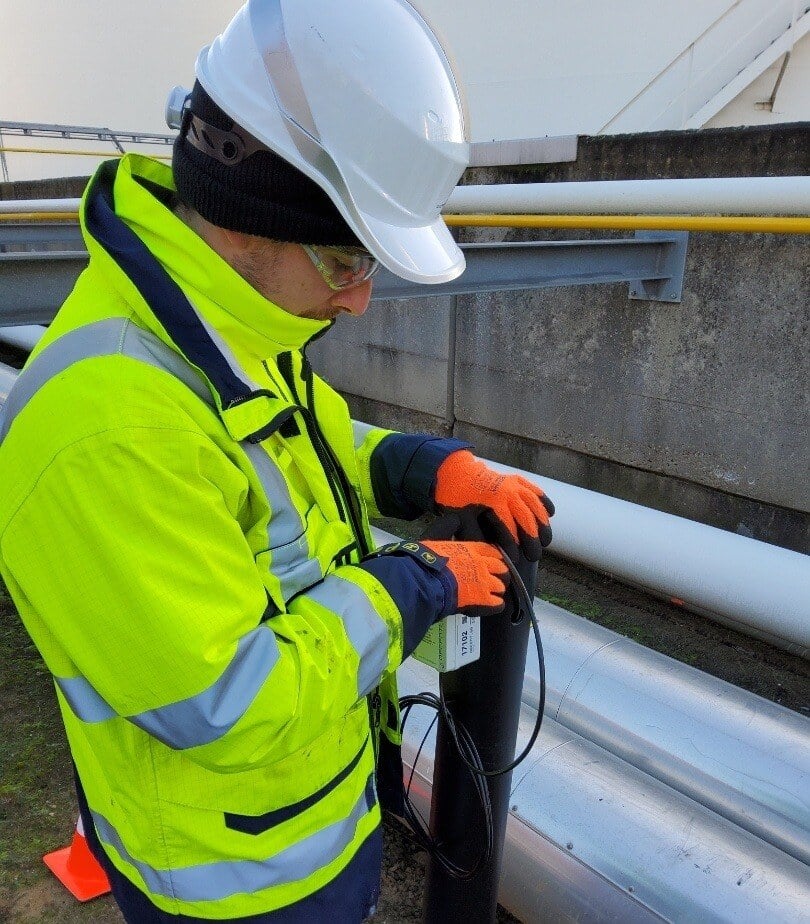"There's a misconception that groundwater is always available and will remain so"
“With better measurement tools and a deeper understanding of groundwater flux, we can face drought challenges with greater resilience and foresight”,...
3 min read
Ellen Bogaert : Jun 10, 2025 6:04:15 PM

“With better measurement tools and a deeper understanding of groundwater flux, we can face drought challenges with greater resilience and foresight”, says Christian Montag, Managing Director iFLUX. Read how.
After record rainfall swept through Belgium last year, we've experienced months of concerning drought. The consequences are becoming increasingly visible across the landscape – groundwater levels rapidly decline, creating mounting challenges for drinking water supplies, agricultural productivity, and natural ecosystems. Along the coast, saltwater intrusion threatens freshwater reserves, further complicating our water security picture.
The scale of Europe's water crisis is staggering. According to the comprehensive "Under the Surface" investigation by Arena for Journalism in Europe, over 15% of Europe's mapped aquifers are in poor condition — dangerously overexploited, contaminated, or both. This figure represents 26% of the aquifers by surface area. The report found that countries like Belgium, Spain, France, and Italy are among the worst affected regions.

The Invisible Crisis Below Our Feet
"Groundwater plays a central role during droughts," explains Christian. "During wet periods, the subsurface is recharged – functioning as a natural buffer. However, we're noticing that this buffer is functioning less predictable, due to disturbed groundwater systems, over-extraction, and climate change."
The challenge lies in answering critical questions with precision: How much groundwater is flowing where? How quickly does the system refill? And perhaps most importantly during drought periods – how rapidly does it empty and what are the effects of all these extreme undulations in the long run?
This challenge is particularly pressing when we consider the severe state of groundwater in Belgium. "Under the Surface" reveals that in Belgium, 75% of deep aquifers are considered overexploited, and the majority of shallow groundwater is contaminated by excessive levels of nitrates from fertilizers. The report quotes Hans Bruyninckx, professor of environmental governance at the University of Antwerp, who warns: "Europe has a major water problem. In some areas, it is becoming extremely urgent... There are places that have reached a point of no return."
Beyond Static Measurements: Understanding Water Movement
Traditional groundwater monitoring typically focuses on measuring water levels at specific points. While valuable, these static measurements don't tell the complete story about groundwater dynamics. That's where flux measurements come in.
"Our flux measurements allow us to monitor how quickly water moves in the subsurface, whether originating from infiltration basins or rivers," Montag notes. "We can detect whether infiltration remains effective or stagnates. Additionally, we can see whether groundwater flows horizontally – toward natural areas or buildings – or vertically down to deeper layers."
This comprehensive understanding of underground water movement is crucial for a variety of drought management applications:
The climate crisis intensifies these challenges. As "Under the Surface" points out, wet winters and summer rains only provide the illusion of plentiful water. Professor Patrick Willems of KU Leuven explains in the report: "Due to climate change we have more extreme conditions: longer periods of drought and other periods with more rain." Heavy downpours saturate topsoil too quickly to be absorbed into aquifers. "Rainfall only affects the levels in shallow water bodies," Willems adds. "The deep groundwater is sealed by almost impermeable layers. It takes decades or even centuries to recover the deep groundwater."
From Data to Decision-Making
As climate variability intensifies, governments across Europe are developing drought reporting systems and intervention strategies. However, these efforts often lack detailed insights into groundwater system behavior.
"With our technology, policymakers and land managers can base their actions on real data – not just historical models or water level measurements," says Montag. "If you know how quickly an area drains, or which zones consistently receive little recharge, you can implement targeted measures. In this sense, flux measurements essentially function as an 'early detection' system for drought stress."
This early detection capability is increasingly critical, as "Under the Surface" reveals that drought frequencies in southern Europe have doubled since 1950. The economic impact is substantial, with Europe experiencing drought-related losses averaging €9 billion annually. During severe drought years like 2018, economic damage reached a staggering €21 billion. The report also highlights that agricultural productivity in southern Europe is projected to decrease by up to 50% over the next 30 years if current water management practices continue unchanged.
Looking Forward
As Belgium and neighboring countries navigate increasingly unpredictable rainfall patterns, understanding groundwater dynamics becomes not just scientifically interesting, but critically important for water security.
At iFLUX, we're continuously developing our solutions to map these invisible but vital underground movements. While our technology can't make it rain or directly replenish depleting water resources, it provides the crucial insights needed to manage existing aquifers more effectively and sustainably.
The urgency is clear: "Under the Surface" predicts that by 2050, an additional 15% of Europe's population will live in water-stressed areas compared to today, potentially affecting more than 100 million Europeans. The report also estimates that proper water management and pollution reduction could save European countries approximately €38 billion in annual water treatment costs, demonstrating that better monitoring and management aren't just environmentally sound – they make economic sense.
As VUB Professor Marijke Huysmans recently highlighted, the current drought situation demands our attention and action. Christian: “With better measurement tools and a deeper understanding of groundwater flux, we can face these challenges with greater resilience and foresight.”
iFLUX was covered on television (footage by ATV) during the Belgian drought periods in 2025

“With better measurement tools and a deeper understanding of groundwater flux, we can face drought challenges with greater resilience and foresight”,...
.jpg)
“With better measurement tools and a deeper understanding of groundwater flux, we can face drought challenges with greater resilience and foresight”,...

Together with Arcadis, iFLUX implemented a groundwater monitoring system to monitor permit requirements at an industrial construction site. The...